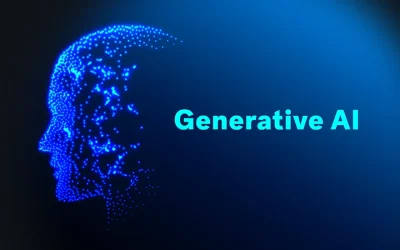What is explainable AI?
Explainable artificial intelligence (XAI) refers to processes and techniques designed to make the decisions and predictions of AI models transparent and human-understandable. The ability to comprehend and understand how a machine learning model generates its predictions or output is known as explainability or interpretability. Depending on their structure, level of complexity, and intended use, different AI models have different approaches to explainability. The main goal of explainability is to improve the transparency and authenticity of AI systems by describing the reasons behind how they make decisions. In this article, we’ll explore what explainable AI means, the milestones achieved to make the AI system transparent, and the challenges that lie ahead.
Importance of explainable AI:
Understanding AI’s reasoning is essential in high-stakes areas like or Transparency is essential to securing trust from users, regulators, and those affected by algorithmic decision-making. For example, if an AI system denies a loan application or recommends a medical treatment, the applicant and the doctor need to know the logic behind those decisions. The primary objective of explainable AI is to improve the transparency and trustworthiness of AI systems by clarifying the reasoning behind their choices.
Transparent vs black-box models:
As AI technology has advanced, two main types of AI systems have emerged: black-box AI and white-box(or explainable) AI. models refer to AI systems that are not transparent to users and arrive at conclusions or decisions without explaining how they were reached. The deep networks of artificial neurons distribute data and decision-making across tens of thousands or more neurons. The neurons collaborate to process the data and find patterns within it, enabling the AI model to make predictions and arrive at specific decisions or answers. On the other hand Transparency in AI refers to making the decision-making process understandable and accessible by providing a clear explanation of the reasons behind the results and output of the model.
AI models can be transparent in the sense of the type of algorithm used, interaction with the user as well as social transparency.
For example, a customer service chatbot might clarify, “I suggested this solution based on your last question.” This helps users feel more confident and informed about how the system’s makes decisions.
Challenges to AI in the Era of Explainable AI (XAI):
AI systems face several challenges, including issues related to privacy and personal data protection, algorithm bias, lack of transparency, ethical concerns, and high implementation costs. These challenges are highly significant for businesses and developers as they strive to implement AI technologies responsibly and effectively. Some of the main challenges to AI systems are:
Balancing Accuracy and Transparency:
There is a trade-off between accuracy and explainability. By increasing explainability the performance and accuracy decrease. Complex models such as deep learning neural networks often provide high accuracy but are difficult to interpret.
Lack of Standardized Explainability Metrics:
There’s no universal method to measure how effectively AI models explain their decisions. In AI and machine learning, the absence of specified explainability measures makes it difficult to evaluate and compare the interpretability of various models. Since new measures that emphasize the significance of both global and local features have been introduced recently, there is still insufficient consensus on a single framework. Similarly, in the online gaming world, players often look for added value through promotions like a Stake Casino bonus, which can enhance the overall experience even without a single standardized approach across platforms.
Complexity of Black-Box Models:
AI models generate responses based on the data it is trained. By using complex algorithms it is sometimes hard to interpret the decision taken or response generated by AI system resulting in a lack of trust and accountability.
Data Privacy and Security Concerns:
Providing transparency can sometimes reveal sensitive data or proprietary algorithms. AI often requires vast amounts of personal data, raising concerns about data privacy, Since these models are often complex “black boxes,” it’s challenging to understand or interpret how they arrive at their recommendations often leading to misleading or wrong output. AI can be misused for malicious purposes, including fraud, hacking, and autonomous weapons.
Example: Deepfakes being used to spread misinformation.
Human Understanding and Trust:
Even with explainable models, non-technical stakeholders may struggle to understand AI explanations. Bridging the gap between technical complexity and human comprehension remains a challenge. Continuous research must be done in order to eliminate the complexity and make AI systems more trustable and authentic.
Ethical and Social Bias:
AI systems may reflect societal biases present in training data, even when transparent methods are used. Ethical considerations are also critical systems may reinforce biases if algorithmic design and data training are biased. This lack of transparency raises ethical concerns about trust and accountability. It’s crucial to make investments in unbiased algorithms and a variety of training datasets to reduce these negative consequences.
Regulatory Compliance:
Organizations may face legal risks if their AI systems don’t meet evolving transparency standards. In AI, regulatory compliance refers to ensuring AI systems follow the necessary regulations, requirements, and industry standards that control their creation, application, and deployment. This procedure is essential for avoiding penalties and maintaining ethical conduct when using AI technologies.
Milestones achieved in Explainable AI:
Nowadays in the data-driven world, the pace of data generation is very high. In order to make it useful, complex Algorithms are transformed. Therefore, Explainable AI (XAI) has evolved to make complex machine learning models understandable and trustworthy. Early efforts focused on simple rule-based systems, which offered clear insights into decision-making processes.
However, as AI systems grew more sophisticated, researchers developed new algorithms and techniques, such as LIME (Local Interpretable Model-agnostic Explanations) and SHAP (SHapley Additive explanations), to demystify black-box models. These breakthroughs have enabled AI to be deployed in sensitive domains like healthcare, finance, and law, where transparency is critical.
Real World Applications: Healthcare, Finance, and Law
For instance, in healthcare, explainable models help doctors understand diagnoses made by AI, while in finance, they ensure fairness in loan approvals. Similarly, legal systems benefit from transparent AI by reducing biases in judicial processes. These milestones reflect the journey of making AI systems both powerful and accountable, paving the way for broader trust and adoption.
Explainability Techniques in AI:
LIME (Local Interpretable Model-Agnostic Explanations):
The technique works by approximating the original model locally with a simpler interpretable model, such as a linear regression, around a specific prediction. For example, if a deep learning model predicts that a patient is at high risk of diabetes, LIME can highlight which input factors (e.g., age, weight, glucose levels) contributed most to that prediction. Its strength lies in its model-agnostic nature, meaning it can work with any machine learning model.
SHAP (SHapley Additive exPlanations):
SHAP is another leading explainability technique that uses game theory principles to assign importance to individual features in a model’s prediction. Inspired by Shapley values from cooperative game theory, SHAP explains how much each feature contributes to a particular decision. For instance, in predicting loan approvals, SHAP can attribute a specific percentage of influence to features like credit score, income, or age.
Saliency maps and Gradient-weighted Class Activation Mapping (Grad-CAM) are techniques specifically designed for explaining deep learning models, particularly in image classification tasks. Grad-CAM, on the other hand, provides heatmaps. For example, in diagnosing pneumonia from X-ray images, these techniques can point out the exact areas of the lung that guided the decision, making AI more transparent for medical professionals.
Partial Dependence Plots (PDPs):
PDPs show the relationship between a single feature (or multiple features) and the model’s predictions, keeping other features constant. For instance, in predicting house prices, a PDP can illustrate how prices vary with changes in square footage.
Similarly, there are various techniques used to enhance AI systems transparent to users such as Morris Sensitivity Analysis, Accumulated Local Effects (ALE), Anchors, Counterfactual Instances Integrated Gradients, Tree Surrogates, Explainable Boosting Machine (EBM), etc.
Real-world Milestones Achieved by Explainable AI
- Improved Trust in Healthcare AI:
XAI has made significant strides in healthcare by improving trust in AI systems. For example, AI models predicting heart disease or cancer risk now provide clear explanations about which factors (like age, lifestyle, or genetic markers) influenced the prediction. Tools like SHAP are actively used in medical diagnostics to ensure that patients and doctors understand AI-driven recommendations. - Enhanced Fairness in Financial Decisions:
Explainable AI is used in banking and finance to justify decisions such as credit approvals or loan rejections. Systems like credit scoring models now reveal which aspects of a borrower’s profile—such as income level or repayment history—led to specific decisions. This transparency helps build trust and ensure compliance with regulations like the Fair Credit Reporting Act. - Transparent Hiring Practices:
Many organizations now use XAI techniques to analyze AI-driven hiring tools. For example, when an applicant is rejected, the system can explain which criteria, such as qualifications or experience, were insufficient, reducing bias and promoting fairness in recruitment. - Self-driving Cars and Safety:
Autonomous vehicle systems incorporate explainable AI to understand and debug decisions in real-world driving scenarios. For instance, if a self-driving car brakes suddenly, XAI can explain whether it was due to an object detection algorithm identifying a pedestrian or another obstacle, increasing accountability. - Legal and Judicial Applications:
Explainable AI has been applied in legal systems to ensure fairness in sentencing and parole decisions. For example, AI tools used in some courts now provide reasons for their recommendations, such as highlighting a person’s past behavior or other relevant factors, ensuring transparency in critical decisions. - Customer Service Bots:
Virtual assistants and chatbots in customer service now employ explainable AI to clarify how they derive responses. For instance, if a chatbot provides financial advice, it can also explain the logic behind its suggestions, making interactions more reliable and trustworthy. - Fraud Detection Systems:
Banks and online platforms use XAI to explain fraud detection. For instance, if a transaction is flagged as suspicious, explainability techniques can identify unusual patterns, such as an unusual location or a higher-than-usual amount, helping users understand the decision. - Energy and Sustainability:
In energy management, explainable AI tools analyze power consumption patterns and recommend ways to save energy. For example, smart home systems can explain why certain appliances consume more energy and suggest optimal usage to homeowners. - Public Awareness Campaigns:
Real-world XAI applications have been highlighted in public campaigns, such as the European Union’s push for AI transparency through GDPR. This initiative has raised awareness among citizens about their right to understand how AI systems use their data. - Personalized Education Tools:
XAI is being used in education technology to provide personalized learning paths for students. AI systems now explain why a specific topic or exercise is recommended based on a student’s performance, making learning tools more engaging and effective.
Future Directions and Solutions:
The coming age of Explainable AI is greatly influenced by the technologies improving day by day. The XAI has achieved tremendous breakthroughs in the tools like NVIDIA Clara and Microsoft InterpretML. These tools are helping us in Healthcare and Finance. To sustain this progress in the future there is a need for a policy such as the European Union AI Act. However, technology cannot surely and perfectly guarantee our success. That is why we need to educate our developers.
Conclusion:
Artificial Intelligence (AI) has transformed the way we live and work, revolutionizing industries like healthcare, finance, and education. As the AI system evolves, explainability and transparency must be guiding principles for its development. Transparent AI systems build trust, promote accountability, and ensure that these technologies work in ways that are both ethical and aligned with human values. By addressing challenges head-on and celebrating milestones in innovation, we can move toward a future of AI where decisions are not just intelligent but also comprehensible and understandable for both technical and non-technical stakeholders.



